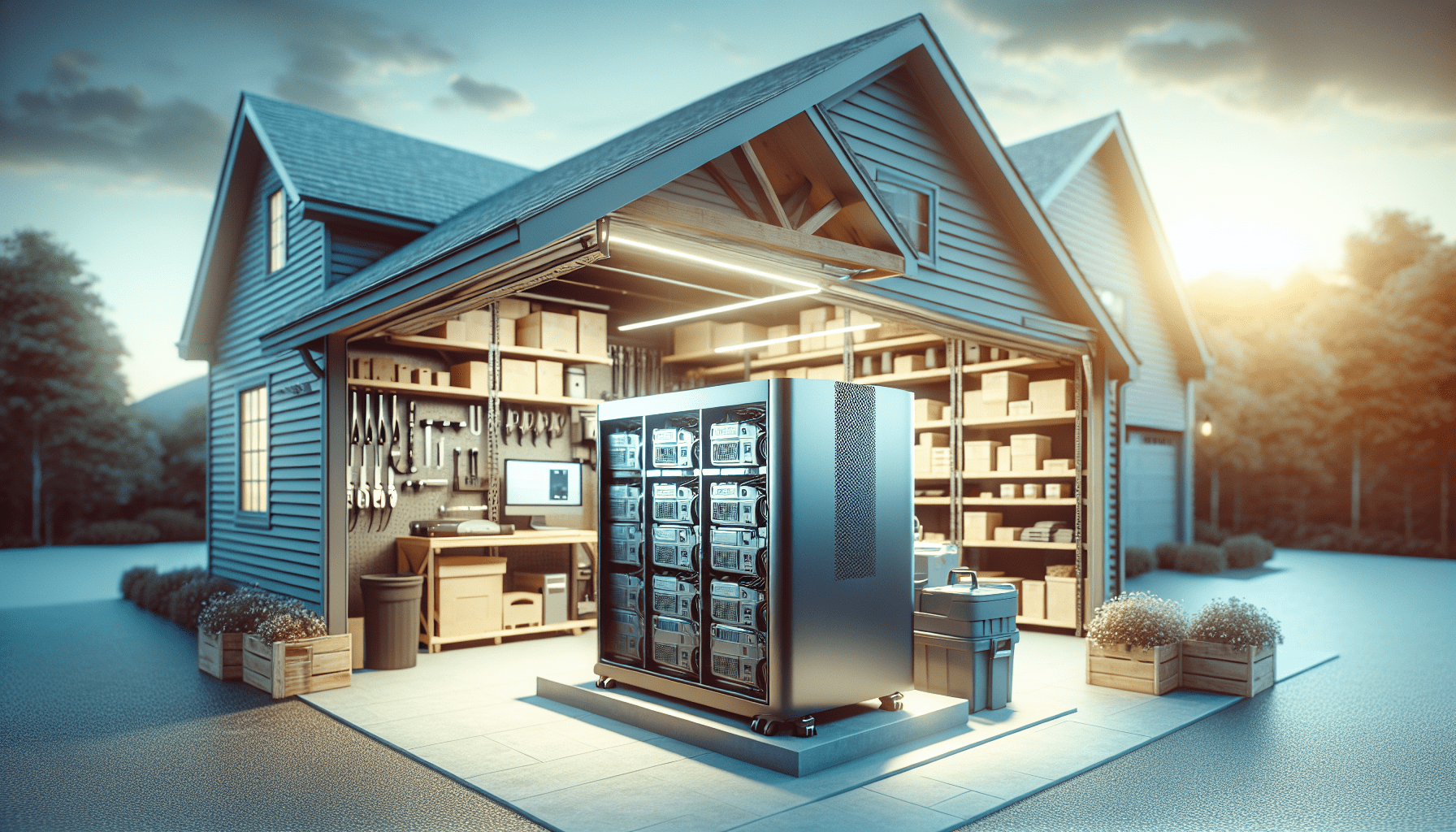When embarking on the journey to select the perfect size for your home power backup system, it can initially seem like a daunting task. By understanding your household’s energy needs and factoring in considerations such as peak power periods and essential appliances, you can navigate this process smoothly. This guide helps demystify the steps involved, equipping you with practical tips and insights to ensure you choose a system that keeps your home seamlessly powered during outages, providing peace of mind and uninterrupted comfort.
How Do I Choose The Right Size Of A Home Power Backup System?
Have you ever been caught in the middle of a power outage and wondered how life could be different if only you had the right backup system? Well, you’re in luck! This article is just for you. Let’s explore how you can choose the right size of a home power backup system tailored to your needs.

Understanding the Basics
Before diving into the specifics, it’s essential to have a basic understanding of what a home power backup system is and why you might need one.
What is a Home Power Backup System?
A home power backup system is designed to provide electricity to your home during power outages. It can keep your essential appliances running, ensuring that you’re not left in the dark or without crucial services.
Why Do You Need a Backup System?
Imagine being in the middle of a hot summer day when the power goes out, and with it, your air conditioning. Or picture a cold winter night without heating. A reliable backup system ensures you’re comfortable and safe, regardless of unexpected power failures.
Types of Home Power Backup Systems
Understanding the different types of backup systems available will help you make a more informed decision. Each has its unique features, advantages, and disadvantages.
Generator Backup Systems
Generators are one of the most common backup systems. They can be portable or stationary, running on gasoline, diesel, propane, or natural gas.
Pros:
- Typically lower upfront cost
- Reliable for extended outages
Cons:
- Requires fuel storage
- Regular maintenance needed
Battery Backup Systems
Battery backups are gaining popularity due to advancements in technology. They store electricity for later use.
Pros:
- Quiet and environmentally friendly
- No ongoing fuel costs
Cons:
- Higher initial cost
- Limited energy storage capacity
Solar Power Backup Systems
Solar power backup systems use solar panels to collect and store energy.
Pros:
- Renewable and sustainable
- Can reduce electricity bills
Cons:
- High upfront cost
- Dependent on sunlight availability
Steps to Choose the Right Size
Choosing the right size for your home power backup system is a crucial step. Here’s how you can navigate this process effectively.
Step 1: Determine Your Power Needs
You need to calculate the total watts required to run the essential appliances in your home during a power outage.
List Essential Appliances
Make a list of all the essential appliances and devices you want to power during an outage (e.g., refrigerator, TV, lights).
| Appliance | Wattage Needed (Running) |
|---|---|
| Refrigerator | 700 watts |
| TV | 200 watts |
| Air Conditioner | 3500 watts |
| Lights (10x50w) | 500 watts |
Calculate Total Wattage
Add the wattage of all the listed appliances to find the total wattage required.
Step 2: Consider Peak Demands
Some appliances, like refrigerators and air conditioners, have higher starting wattages compared to their running wattages. Consider these peak demands to avoid undersizing your system.
| Appliance | Running Wattage | Starting Wattage |
|---|---|---|
| Refrigerator | 700 watts | 2200 watts |
| Air Conditioner | 3500 watts | 4500 watts |
Step 3: Decide on the Backup Duration
How long you need the backup system to run will also influence the size of the system.
Short Outages
If your area experiences short but frequent outages, a smaller system might suffice.
Prolonged Outages
For areas with longer outages, you’ll need a more substantial system that can provide power for extended periods.
Step 4: Calculate Battery Storage (for Battery Backup Systems)
If opting for a battery backup system, you’ll need to calculate the total watt-hours required to store enough power.
Example Calculation
- Total daily wattage: 5000 watts
- Desired backup duration: 2 days
- Battery storage needed: 5000 watts x 2 days = 10,000 watt-hours
Step 5: Account for Efficiency
Both generators and battery systems have efficiency ratings. Always account for these to ensure your system meets your needs.
Step 6: Consider Future Needs
Your power consumption might increase in the future as you add new appliances. Keep a margin for future expansion.
Choosing the Right System
Once you’ve determined the size, it’s time to choose the right system matching your needs and preferences.
Portable vs. Stationary Generators
Portable generators are mobile and versatile, while stationary generators offer a permanent solution with greater power output.
Battery Backup Systems
Choose a system with the right storage capacity, keeping in mind the efficiency and power requirements.
Hybrid Systems
Consider a combination of solar and battery systems for a more sustainable and reliable solution.

Installation and Maintenance
Ensuring proper installation and regular maintenance can prolong the lifespan of your power backup system.
Professional Installation
Especially with stationary generators and complex battery systems, professional installation ensures safety and efficiency.
Regular Maintenance
Generators require regular check-ups, fuel replenishments, and parts replacements. Battery systems need periodic reviews to ensure optimal performance.
Costs and Budgeting
Budgeting is an essential aspect of choosing the right size and type of home power backup system.
Initial Costs
Consider the initial cost of the system, including installation fees.
Example Cost Breakdown
| Component | Estimated Cost |
|---|---|
| Portable Generator | $500 – $2000 |
| Stationary Generator | $2000 – $7000 |
| Battery System (10 kWh) | $5000 – $20000 |
| Solar Panels + Battery | $15000 – $30000 |
Operational Costs
Factor in the ongoing costs such as fuel for generators or maintenance for both generator and battery systems.
Financing Options
Consider financing options and incentives for renewable energy systems, making it easier to invest in solar and battery backups.

Frequently Asked Questions
Let’s address some common questions you might have.
How Often Should I Maintain My Generator?
It’s recommended to service your generator at least once a year, or after every 200 hours of operation.
Are Solar Panels Effective in Cloudy Areas?
While solar panels produce less energy on cloudy days, they still generate some power and can be paired with batteries for efficient storage.
Can I Install a Backup System Myself?
For simple portable generators, self-installation might be feasible. However, for stationary generators and battery systems, professional installation is advised.
Conclusion
Choosing the right size of a home power backup system might seem overwhelming, but breaking down the process makes it manageable. Determine your power needs, consider the type of backup system that suits your requirements, plan for future needs, and account for installation and maintenance costs. By following these steps, you’ll be well on your way to ensuring that your home remains powered, come what may. So the next time you experience a power outage, you can confidently sit back, relax, and enjoy the uninterrupted comfort of your home.
Feel free to explore your options and take the necessary steps to equip your home with the right power backup system. It’s an investment in comfort, safety, and peace of mind.


